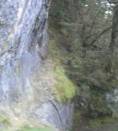Introducing Limestone Natural Stone Pavers
Limestone Pavers Origins, History and Maintenance
Origins
Limestone is predominately made up of calcium carbonate, otherwise known as the mineral calcite, mostly found in the ocean or in caves. This mineral is formulated in the sea, through the combination of a lime discharge from coral and algae, deposited on the seabed floor. Limestones are layers upon layers of hard sediment, containing traces of fossils from shellfish and other marine animals. On land, calcite is generated through precipitation which formulates limestone in caves. These are called stalagmites and stalactites. The secondary contents of limestone may be silt and clay. |
 |
History
Limestone has been very popular in the building industry for over 100 years. In the late 1800’s and early 1900’s limestone was everywhere to be found! In this era most of the main buildings in the towns were made using limestone, such as the bank, the town hall and even the train station! It was also widely used in art for sculptures and statues.
Benefits
 |
Limestone pavers are a very reliable, long-lasting building material. It is a quarried stone, so it is always available and can be cut to size and customized to one’s special needs. Limestone is a very heavy and expensive stone, but has continued to be a popular building and landscaping product. |
LIMESTONE MAINTENANCE
Protection
It is very important to protect your Limestone pavers from traffic until the grout has cured. It is also not advisable to use Limestone flooring as a storage area for materials or equipment.
Cleaning
Acid cleaning solutions are not recommended for use on Limestone pavers. When choosing the correct cleaning product, be sure to consult the manufacturer before you use the cleaning product, so as to gain more information.
After applying any type of cleaning solution, it is important to thoroughly rinse the pavers straight away.
Cleaning tools such as metal and steel bristled brushes are not suitable for use on Limestone pavers.
Procedures
In order to protect and pro-long the life of your Limestone pavers, it is necessary to carry out regular maintenance procedures.
You should frequently sweep off any debris, or you may choose to use a vacuum. It is also beneficial to mop the Limestone flooring to really control the loose dirt.
Sealing
If any stains or spills occur, it is recommended to remove these promptly, so as not to allow stains to be absorbed. It is highly advised to seal your Limestone pavers as this will ensure the visual appeal and durability of your flooring.
Sealing your Limestone pavers allows you to remove stains and clean with greater ease and effectiveness.





